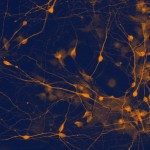Link to Pubmed [PMID] – 32733333
Link to DOI – 10.3389/fpsyg.2020.01480
Front Psychol 2020 ; 11(): 1480
To this day, the study of the substratum of thought and its implied mechanisms is rarely directly addressed. Nowadays, systemic approaches based on introspective methodologies are no longer fashionable and are often overlooked or ignored. Most frequently, reductionist approaches are followed for deciphering the neuronal circuits functionally associated with cognitive processes. However, we argue that systemic studies of individual thought may still contribute to a useful and complementary description of the multimodal nature of perception, because they can take into account individual diversity while still identifying the common features of perceptual processes. We propose to address this question by looking at one possible task for recognition of a “signifying sound”, as an example of conceptual grasping of a perceptual response. By adopting a mixed approach combining qualitative analyses of interviews based on introspection with quantitative statistical analyses carried out on the resulting categorization, this study describes a variety of mental strategies used by musicians to identify notes’ pitch. Sixty-seven musicians (music students and professionals) were interviewed, revealing that musicians utilize intermediate steps during note identification by selecting or activating cognitive bricks that help construct and reach the correct decision. We named these elements “mental anchorpoints” (MA). Although the anchorpoints are not universal, and differ between individuals, they can be grouped into categories related to three main sensory modalities – auditory, visual and kinesthetic. Such categorization enabled us to characterize the mental representations (MR) that allow musicians to name notes in relationship to eleven basic typologies of anchorpoints. We propose a conceptual framework which summarizes the process of note identification in five steps, starting from sensory detection and ending with the verbalization of the note pitch, passing through the pivotal role of MAs and MRs. We found that musicians use multiple strategies and select individual combinations of MAs belonging to these three different sensory modalities, both in isolation and in combination.

